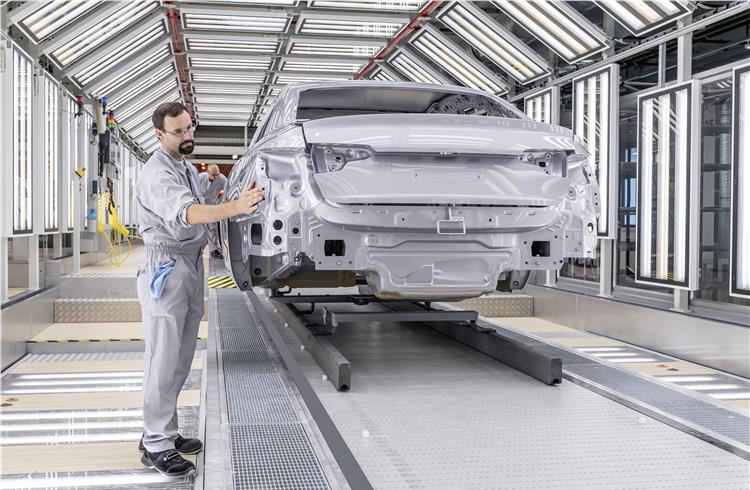When it comes to achieving a smooth and professional finish on car paint, knowing what grit sandpaper to use is crucial. Whether you’re an industry QA professional or a DIY enthusiast, selecting the right sandpaper can make a tremendous difference in the outcome of your project. In this guide, we’ll delve into the specifics of sandpaper grit and its impact on car paint applications, ensuring you achieve the best results every time.
Understanding the intricacies of sandpaper grit not only ensures a smoother paint job but also prolongs the lifespan of your vehicle’s exterior. Through this in-depth examination, we’ll explore various grit levels, their uses, and tips for sanding your car paint efficiently.

What is Sandpaper Grit?
Sandpaper grit refers to the abrasive particles coated on the sandpaper surface. These particles determine the level of abrasiveness and the effectiveness of the sandpaper. The grit number indicates the size of the abrasive particles; the lower the number, the coarser the grit. Conversely, a higher grit number means finer abrasives, suitable for smoother finishes.
Types of Sandpaper Grit for Car Paint
Choosing the right grit sandpaper for car paint involves understanding the different types available and their specific uses:
Coarse Grit (40-60 grit)
This type of grit is typically used for heavy material removal, such as stripping old paint or smoothing rough surfaces. It’s ideal for the initial stages of sanding but not recommended for finish work.
Medium Grit (80-120 grit)
Medium grit sandpaper is suitable for preparing the surface for priming. It removes minor imperfections and provides a decent surface for the primer to adhere to.
Fine Grit (180-220 grit)
Often used before applying the base coat, fine grit sandpaper helps smooth the surface after priming. It ensures that there are no rough patches that could affect the paint application.
Very Fine Grit (320-400 grit)
This grit level is used for final sanding before the application of the clear coat or paint. It offers a smooth finish, ensuring the paint adheres well and provides a glossy look.
Ultra-Fine Grit (800-1200 grit)
Ultra-fine grit sandpaper is used for wet sanding between coats of paint and clear coat. It helps in removing minor imperfections and provides an ultra-smooth finish.
The Role of Sandpaper in Car Paint Preparation
Preparation is key to achieving a professional paint finish. Sandpaper plays a vital role in this process by ensuring the surface is smooth and ready for paint application:
Surface Cleaning
Before sanding, it’s essential to clean the car’s surface to remove any dirt, grease, or contaminants. This ensures that the sandpaper doesn’t get clogged and works efficiently.
Sanding the Old Paint
Using coarse grit sandpaper, you can effectively strip away old paint, rust, or imperfections. This creates a smooth base for the new paint to adhere to.
Smoothing the Surface
Once the old paint is removed, medium to fine grit sandpaper is used to smooth the surface. This step is crucial for eliminating any remaining imperfections before applying the primer.
Preparing for Primer
Using fine grit sandpaper, you can prepare the surface for the primer application. This step ensures that the primer adheres well, providing a smooth base for the paint.
Final Sanding
After applying the primer and base coat, very fine and ultra-fine grit sandpapers are used for wet sanding. This final step ensures an ultra-smooth finish, ready for the clear coat application.
Tips for Sanding Car Paint
To achieve the best results, consider these tips when sanding car paint:
Use the Right Tools
Ensure you have the right sanding tools, such as sanding blocks or orbital sanders. These tools help in applying even pressure and achieving a consistent finish.
Wet Sanding Techniques
Wet sanding involves using water to lubricate the surface, reducing friction and heat buildup. This technique is especially useful for ultra-fine grit sandpapers and provides a smoother finish.
Test a Small Area
Before sanding the entire surface, test a small area to ensure you’re using the correct grit sandpaper. This helps in preventing any damage to the paintwork.
Work in Stages
Sanding should be done in stages, starting from the coarser grits and gradually moving to finer grits. This ensures a smooth and professional finish.
Maintain Even Pressure
When sanding, apply even pressure to avoid creating uneven surfaces. Let the sandpaper do the work, and don’t press too hard.
Common Mistakes to Avoid When Sanding Car Paint
To achieve a professional finish, avoid these common mistakes:
Skipping Grit Levels
Each grit level has its purpose, and skipping levels can result in an uneven surface. Follow the recommended grit progression for optimal results.
Not Cleaning the Surface
Failing to clean the surface before sanding can cause the sandpaper to clog, reducing its effectiveness. Always clean the surface thoroughly before starting.
Using the Wrong Grit
Using too coarse or too fine grit for the specific task can lead to poor results. Understand the purpose of each grit level and use the appropriate one.
Applying Too Much Pressure
Pressing too hard on the sandpaper can create gouges and uneven surfaces. Maintain even pressure and let the sandpaper do the work.
Conclusion: Achieving a Professional Car Paint Finish
Knowing what grit sandpaper to use for car paint is essential for achieving a professional finish. Whether you’re stripping old paint, preparing for primer, or applying the final coat, selecting the right grit can make a tremendous difference in the outcome.
By following the guidelines and tips provided in this article, you’ll be well-equipped to handle any sanding task, ensuring your car paint job looks flawless and lasts longer. For more insights into the types of car paint and applications, you can refer to this external guide on car paint.

FAQs: What Grit Sandpaper for Car Paint?
What grit sandpaper should I use to remove paint?
For removing paint, start with coarse grit sandpaper (40-60 grit) to effectively strip away the old paint and smooth rough surfaces.
Can I use fine grit sandpaper for priming?
Yes, fine grit sandpaper (180-220 grit) is ideal for preparing the surface before applying the primer. It ensures a smooth base for the primer to adhere to.
What is the best grit for wet sanding between coats?
Ultra-fine grit sandpaper (800-1200 grit) is best for wet sanding between coats. It removes minor imperfections and provides an ultra-smooth finish.
If you also need to understand various types of sandpaper grit, heres a detailed guide.
